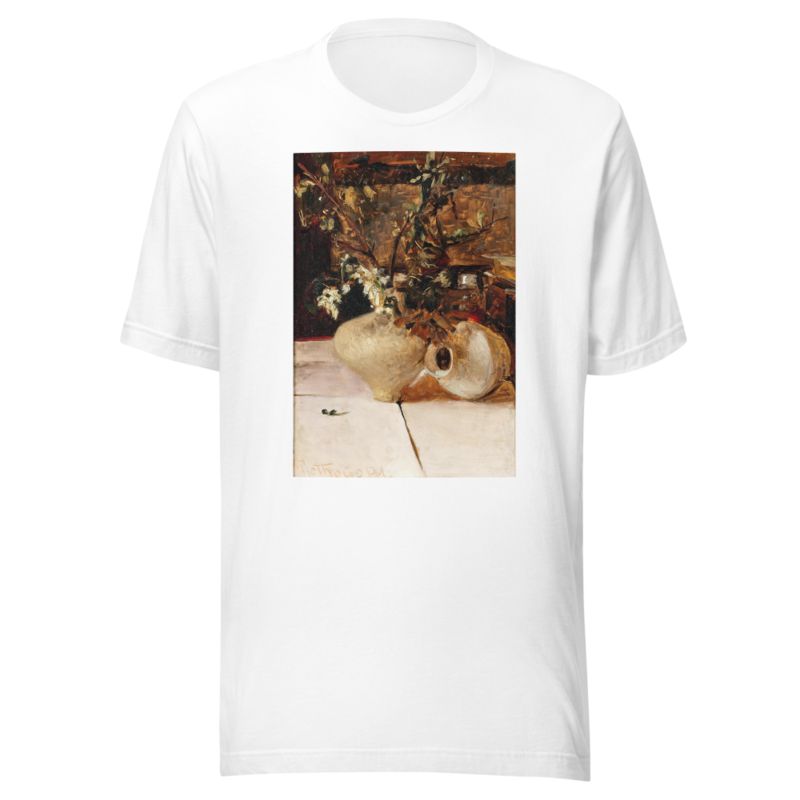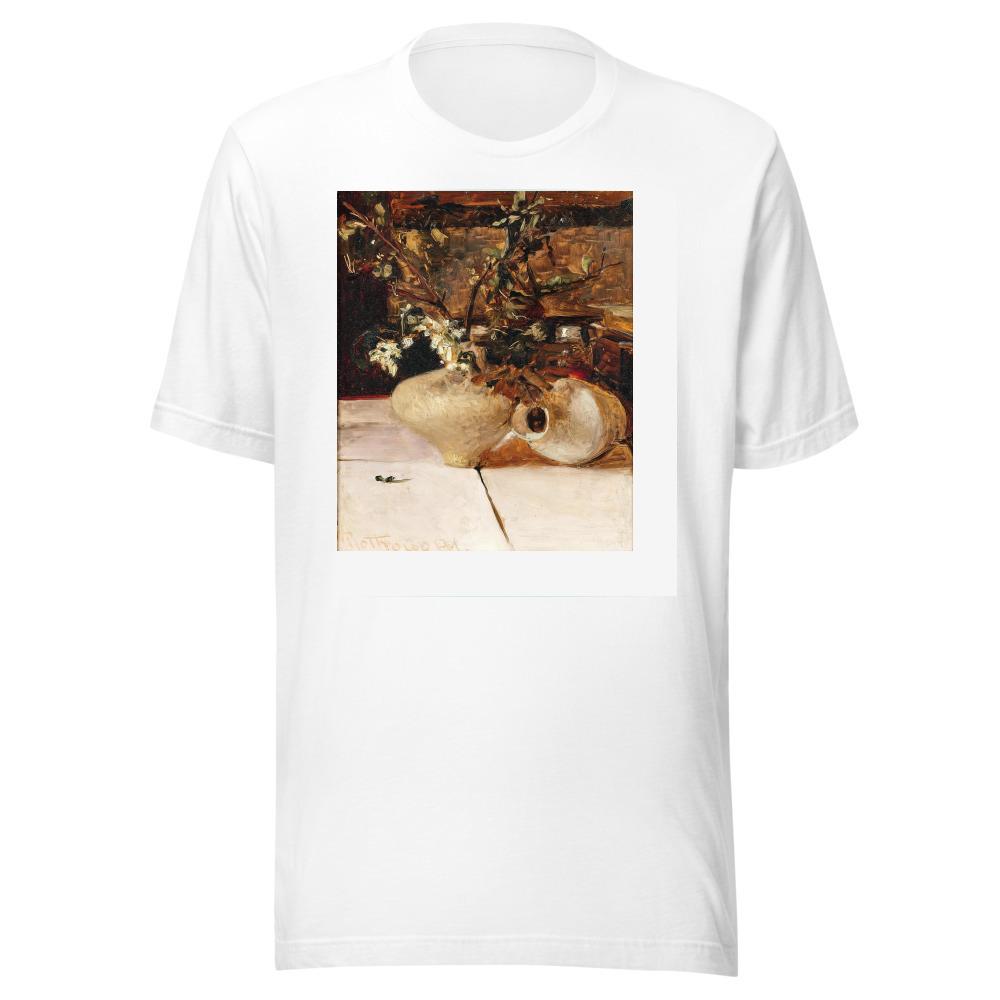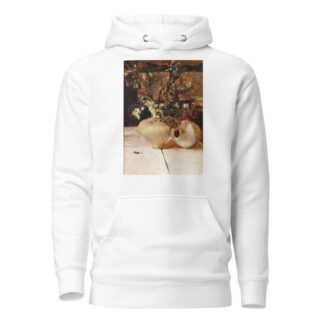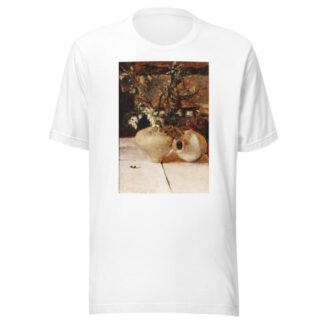Description
Still life with vases by Alexander Rothaug printed on a T-Shirt
About the T-Shirt
Regular fit
Standard length, the fabric easily gives into movement
Casual wear
A classic, everyday option loved by our customers
Side-seamed
Constructed by sewing two parts together, creating a fitted look
The Unisex Staple T-Shirt feels soft and light with just the right amount of stretch. It’s comfortable and flattering for all. We can’t compliment this shirt enough–it’s one of our crowd favorites, and it’s sure to be your next favorite too!
- Solid colors are 100% Airlume combed and ring-spun cotton
- Ash color is 99% combed and ring-spun cotton, 1% polyester
- Heather colors are 52% combed and ring-spun cotton, 48% polyester
- Athletic and Black Heather are 90% combed and ring-spun cotton, 10% polyester
- Heather Prism colors are 99% combed and ring-spun cotton, 1% polyester
- Fabric weight: 4.2 oz./yd.² (142 g/m²)
- Pre-shrunk fabric
- 30 singles
- Side-seamed construction
- Tear-away label
- Shoulder-to-shoulder taping
- Blank product sourced from Nicaragua, Mexico, Honduras, or the US
Alexander Rothaug (1870 – 1946)
Alexander Rothaug was born on March 13, 1870 in Vienna and died March 5, 1946. He was the son of Theodor Rothaug and Karoline Rothaug (born Vogel). His maternal ancestors were also painters and sculptors. With the two-year-old brother Leopold Rothaug, Alexander received the first painting lessons from his father Theodor.
In 1884, he began learning sculpture with Johann Schindler (1822-1893) at the Viennese Academy of Arts. In 1885 he studied painting with August Eisenmenger, Christian Griepenkerl and Franz Rumpler. The painter Leopold Carl Müller also had an important influence on him as a teacher.
In 1892 Rothaug moved to Munich, where he worked as an illustrator for the humorous magazine Fliegende Blätter (The Flying Leaves), thanks to this work he became known all over the world. Rothaug’s paintings were regularly shown at exhibitions in The Munich’s Glass Palace (from 1899), in Hamburg and at the Great Art Exhibitions in Berlin. In the Viennese artist’s house, he was represented for the first time at the Jubilee Exhibition in 1898, and from 1909 onward regularly at Künstlerhaus exhibitions. In 1896 he married Ottilie Lauterkorn. He undertook study trips to Dalmatia, Italy and Rügen. In May 1910 he became a member of the Cooperative of Fine Artists of Vienna. In 1911, an extensive article on Alexander Rothaug appears in the journal Kunst-Revue.
In 1912 he took part of the invitation by Archduke Ludwig Salvator in Majorca, Spain. Rothaug created the publication Skizzen aus Miramar on his stay there. These many trips inspired Rothaug on his landscape motifs. In 1913 Alexander Rothaug received the Baron Richard Drasche Award for outstanding artistic achievements.






Reviews
There are no reviews yet.